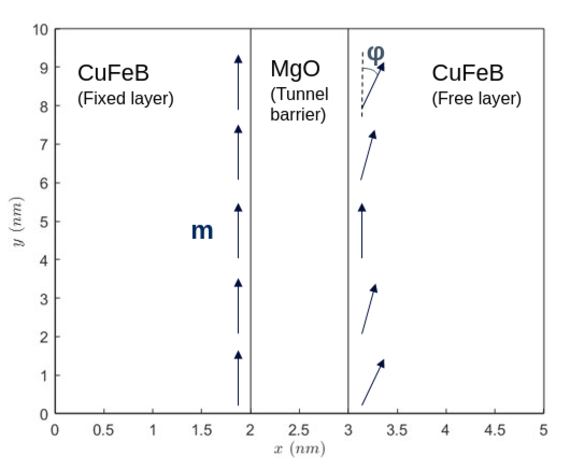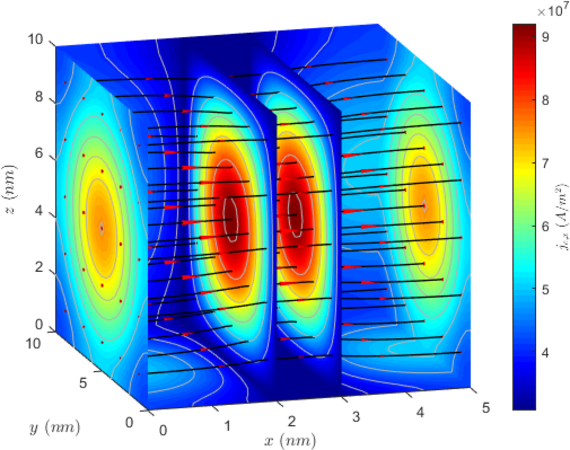 |
|
Biography
Simone Fiorentini was born 1992 in Verona, Italy. He received his Bachelor degree and Master Degree in Physiscs from the University of Padova, in 2014 and 2017, respectively. He carried out his Master Thesis the Ruprecht-Karls University of Heidelberg through the Erasmus Program. After a short period working for an IT company in Milan, Italy, he joined the Institute for Microelectronics in November 2018, where he started his PhD studies. He is currently investigating ways to appropriately simulate both spin and magnetization dynamics in non-volatile magnetic memory devices.
Spin and Charge Drift-Diffusion in Magnetic Tunnel Junctions
In recent years, the increase in semiconductor devices' power consumption due to scaling to ever-smaller dimensions has driven the search for less energy consuming technologies. One solution for the leakage in modern dynamic RAMs is the implementation of non-volatile memories, which do not require static power consumption and data refresh. Magnetic random-access memories (MRAMs) represent one of the best candidates for non-volatile memories. In magnetic tunnel junctions (MTJs), two magnetic (pinned and free) layers are separated by an insulating oxide layer. The tunneling rate of spin-carrying electrons is highest when the magnetic moments of the pinned and free layers are parallel, and lowest when they are anti-parallel, giving rise to the tunneling magnetoresistance effect (TMR). The resistance of the structure can thus lie in two main states, which can be used to provide the 0 and 1 state of a bit.
Switching of the free layer can be achieved through the torque exerted on the magnetization by a spin-polarized current (Spin-Transfer Torque MRAM). In order to improve the design and engineering of new devices, the development of reliable tools for magnetization switching simulations is crucial. The STT effect in magnetic tunnel junctions can be simulated by adding polarization and current density dependent torque terms, first predicted by Slonczewki, to the micromagnetic Landau-Lifschitz-Gilbert (LLG) equation. In order to better understand the complex dynamics of spin and charge transport, however, spin accumulation throughout the whole system needs to be computed.
We have developed a way of addressing non-uniform current flow though an MTJ structure due to high TMR. First, the voltage profile in the ferromagnetic electrodes is computed by solving the Laplace equation with appropriate Neumann boundary conditions at the magnet/oxide interfaces, which simulate the dependency of the resistance on magnetic moments' orientation. The first derivative of the solution, multiplied by conductivity, provides the current values through the system. A representation of the structure is reported in Fig. 1, while the effect of non-uniform resistance due to the spacer layer on the current is reported in Fig. 2. The computed current can then be fed to a 3D finite element solver of the drift-diffusion equation for spin accumulation in the whole structure. Spin accumulation then provides the torque term to be added to the LLG equation in order to properly simulate magnetization dynamics.

Fig. 1: MTJ structure with non-uniform magnetization distribution (2D view).

Fig. 2: Non-uniform current distribution (3D view).



